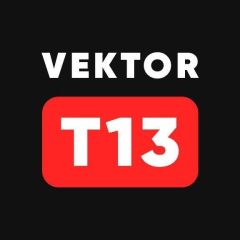All Activity
- Past hour
-
onlydockyc started following PDF files of templates for confirming your residential address.
-
In an environment where digital verification is becoming ubiquitous and the requirements of various platforms are constantly changing, it is extremely important to have access to up-to-date and accurate documentation. We offer professional solutions based on our experience. Looking for where to buy fresh statements for independent editing? - No more wasting time searching for files! We offer editable PDF templates for various confirmations. Our goal is to help you optimize this process, making it as simple and efficient as possible. What do we offer? - Editable PDF files: all types of utility bills, water bills, gas bills, electricity bills, internet bills, phone bills, TV bills, as well as bank statements for many countries. Some files come with original fonts and additional versions for perfect customization to your needs. Regular updates with fresh templates and source files. Additionally, you can find PDF files of templates confirming ownership, family ties, and immigration confirmation. Ideal for crypto exchanges, e-wallets, bookmakers, and any other platforms where you need to verify your identity, location, transaction, income, or status. Operational assistance with working with templates. I will advise you free of charge, where possible, on the need to use templates for your purposes. (within reason) Working through a guarantor (ESCROW) is welcome (the buyer pays the guarantor). For orders, details, or questions, please contact me. For security reasons, please use ONLY direct links (to avoid fakes)! Basic Telegram: @onlydockyc ( https://t.me/onlydockyc ) Alternative Telegram: @templdocs ( https://t.me/templdocs ) Telegram chatbot: @templdocbot ( https://t.me/templdocbot ) Telegram channel: https://t.me/+_eTrZ6coDA43ZGNi Discord: onlydockyc Jabber: onlydockyc@xmpp.jp Email: onlydockyc@protonmail.com IMPORTANT: In case Telegram is blocked, use alternative messengers/mail.
- Today
-
🔥 TOP PROXIES OF THE WEEK 🔥 Every week we select those who show maximum speed, stability, and anonymity — only true leaders make it into the top. This week in the ranking: 🇺🇸 US Lumina Broadband (Residential) — clean and stable US IPs with excellent uptime. 🇬🇪 4G Georgia Tbilisi Magticom Unlimited (Mobile) — Georgia enters the top: low ping and stable performance. 🇷🇴 Romania Telekom Mobile Unlimited (Mobile) — Romania surprises: high-quality connection and reliable mobile IPs. 🇺🇸 US Frontier (Residential) — stability and power for any task, proven over time. 🇲🇽 MX Lietpark Communications (Residential) — Mexico among the leaders again: rare, high-quality residential IPs. ⚡️ These proxies delivered maximum performance this week and rightfully earned their spot in the top Test them now — only top-tier solutions from CyberYozh App 😎
-
Good dedicated server for video streaming?
Torabingo replied to Sovegeko's topic in Hosting & Domain Providers
A dedicated server is necessary for those who have a site whose traffic increases significantly during holidays and weekends (this also applies to “seasonal” sites). Choose Regvps.com bare metal server comes with 100Mbps public and private network uplinks, and you have the flexibility to upgrade or downgrade that connection based on your workloads. -
Dedicated servers with dynamic scaling options?
Torabingo replied to Matimaka's topic in Hosting & Domain Providers
You'd better choose GTHost.com instant servers. The commitment to customer satisfaction is evident in their exceptional support team. Their refund policy is fair and customer-friendly, making them a risk-free choice. -
Best shared hosting provider ... what is that?
Torabingo replied to AlexMcPhail's topic in Hosting & Domain Providers
Why not give Netshop-isp.com.cy web hosting solutions a try? The hosting plans are packed with features that enhance website performance. The customer support team always goes the extra mile to resolve issues promptly. -
PiaProxy's Black Friday special is coming soon, offering the following discounts for users who need proxy services: SOCKS5 Exclusive Offers 200IP, 400IP, 600IP, and other packages: Enjoy a 10% discount Enterprise-level SOCKS5 packages: As low as $0.03/IP Residential Proxy Offers Residential proxy discounts as low as $0.65/GB All unlimited data packages 10% off Those who register through this link can find me on the official website to receive coupons and more surprise gifts.Limited time offer (7 days) http://www.piaproxy.com/?co=monetizebetter&ck=?01
-
#XRP #XRPETF #DTCC The XRP ETF is officially coming — and not just one, but five spot XRP ETFs: from Franklin Templeton, Bitwise, Canary Capital, 21Shares, and CoinShares. Surprisingly, the market reaction was muted. Despite XRP’s high name recognition, there was no frenzy comparable to the Bitcoin spot ETF mania. XRP’s price barely moved, and social media chatter remained low. On November 10, all five XRP spot ETFs appeared on the DTCC (Depository Trust & Clearing Corporation) system list — meaning traditional financial infrastructure has now opened its doors to XRP. The DTCC is the core settlement body of the U.S. capital markets; every U.S. ETF must clear, settle, and register through it. To be “listed on the DTCC” is essentially to obtain Wall Street’s admission ticket. Yet while five ETFs gained entry, the market stayed quiet. So we must ask: Why is a token that has been recognized by the U.S. financial settlement system still so undervalued? Mispricing the Asset: XRP Is Not a Speculative Token — It’s Financial Infrastructure Most traders analyze crypto assets through the same lenses — price trends, volatility, sentiment, or on-chain activity. But these indicators fail to capture XRP’s underlying structural value, because its design philosophy differs from mainstream crypto entirely. Bitcoin represents decentralized value storage. Ethereum represents programmable logic and computation. XRP represents a liquidity transmission protocol. In essence, XRP is not designed to be scarce, but to achieve speed, determinism, and liquidity neutrality. You can think of XRP as the “TCP/IP layer” of global finance. During the early Internet era, investors poured money into content and portals while ignoring the cables, servers, DNS, and protocol stacks that actually powered the web. Only when those infrastructures became indispensable did capital recognize that the real value lay in the invisible layers. XRP stands at that same inflection point. To understand XRP’s role, we must return to its original design purpose. XRP’s True Mission: A Bridge Asset for Global Settlement Ripple’s XRPL (XRP Ledger) was never built for speculation. Its purpose has always been to serve as a neutral, real-time settlement layer for the global financial system. In traditional cross-border payments, remittances go through multiple correspondent banks, the SWIFT network, currency conversions, and reconciliation layers — each step adding friction and cost. XRP was designed to serve as the bridge asset among these systems. Through On-Demand Liquidity (ODL), XRP enables instant conversion and settlement across currencies, countries, and clearing networks — without relying on pre-funded accounts. For example: A Mexican bank remitting funds to a Philippine bank would normally pass through three clearing layers. With ODL, the flow converts MXN → XRP → PHP in seconds — instant settlement, no intermediaries. As RippleNet’s partner banks scale adoption, XRP demand will be driven not by speculation, but by real-world payment volume — by the flow of global capital itself. That’s the structural value accumulation most investors have overlooked. The Deeper Meaning of an XRP ETF Many see the XRP ETF as another speculative talking point, but its real significance runs deeper. ETFs are the native language of traditional finance — they represent structures that can be custodied, cleared, audited, and held by institutions. When a digital asset is accepted into DTCC, it becomes eligible for inclusion in institutional portfolios — pension funds, sovereign wealth funds, and asset managers. For XRP, this marks not merely an investment channel, but systemic validation — confirmation that it has crossed from crypto’s edge into traditional finance’s liquidity infrastructure. Most importantly, the logic differs fundamentally from Bitcoin’s ETF. Bitcoin ETF → “Buy and hold = store of value.” XRP ETF → “Buy and hold = participation in financial transmission.” XRP’s ETF is functional validation, not speculative hype. It signals that institutions now recognize XRP’s infrastructure utility. The Root of Undervaluation: A Mismatch in Pricing Models In 2023, a U.S. court ruled that XRP’s exchange-traded circulation does not constitute a security, clearing the compliance barrier for institutional use.In traditional finance, regulatory clarity = reduced adoption friction.Banks, payment processors, and custodians can now integrate XRP without legal overhang. Yet the market still values XRP as a high-volatility asset, ignoring this compliance and utility breakthrough.From a valuation perspective: Market price reflects sentiment. True value grows with depth of use. RippleNet now partners with over 100 financial institutions across 40+ countries. As tokenized bonds, stablecoins, and CBDCs move toward cross-chain interoperability, XRP’s bridge-layer role becomes foundational infrastructure. Therefore, XRP should be valued not by speculative mood, but by its share of global financial throughput. In short, the market is applying a trader’s model to value a protocol-layer asset — that’s the real reason it remains undervalued. The Post-ETF Structural Shift: From Narrative to Demand While the ETF launch may not spark an immediate price rally, it quietly changes XRP’s value logic — shifting from narrative-driven to demand-driven. As tokenization of real-world assets (RWA) accelerates, the need for cross-chain, cross-asset, and cross-currency settlement is exploding. Whether tokenized treasuries, digital euros, or stablecoins, all require a neutral, reliable, low-latency liquidity layer. That’s exactly where XRP fits — not as a competitor to any single blockchain, but as the connector of multi-chain finance. The ETF is only the entry point; the real transformation is functional integration into mainstream systems. Once XRP is adopted by more banks, clearing houses, and payment networks for actual settlement, price revaluation will no longer depend on retail hype but on institutional transaction volume. ETF grants XRP legal identity. RWA adoption gives it tangible demand. Together, they form the conditions for a structural re-pricing of the asset. Conclusion: What’s Undervalued Is Not the Price, But the Time XRP’s story has never been about short-term speculation — it’s a long-term experiment in financial architecture evolution, much like all transformative infrastructure: Before it’s needed, it’s ignored. Once it’s indispensable, value compounds exponentially. Bitcoin symbolizes the revolution of value storage. Ethereum symbolizes the revolution of programmable logic. XRP symbolizes the revolution of global liquidity. As the world moves into a tokenized financial era, where cross-border settlement no longer needs correspondent banks and assets flow seamlessly across ledgers, the market will eventually recognize the asset it once overlooked. What’s undervalued isn’t XRP itself — it’s the time the world still needs to understand it.
-

What is the best Java hosting provider?
Daniel165 replied to FrankBunnell's topic in Hosting & Domain Providers
Celebrate Black Friday with double hosting delight! Buy 1 Year and Get 1 Year FREE on Linux & Windows Hosting. Boost your site’s speed and reliability with bodHOST’s trusted hosting! Order Now: https://www.bodhost.com/black-friday-web-hosting-deals -
stevenyoung joined the community
-
We as a leading proxy service will help you forget about captcha and disconnects forever. People tell you that you can't be in 2 places at the same time? Forget it, With SX you can do that too. Each of you will get a trial version of SX to familiarize yourself with the product, all you have to do is post in this thread!
-
MonetizeBetter would like to wish all members celebrating their birthday today a happy birthday: poonamsharma (25)Triund Trek (44)Michael Butcher (35)Kevin_Stings (35)Whitepick (27)Johnimmom (27)StonedApe (40)luciferwick (29),
-
At GTHost, we believe in creating a service and environment that supports openness and complete transparency. Our dedicated instant servers are available in as little as 5 to 15 minutes of your payment. We offer comprehensive options for Dedicated Instant Servers throughout the U.S., Canada, Middle East and Europe. Our Looking Glass portal supports our mission of transparency by allowing you to easily check the connectivity of GTHost network and also to perform several key tests including ping and trace. Locations: 20 - Instant Dedicated Servers: 2,000+. Unmetered and guaranteed bandwidth from 300Mbps to 10Gbps. No setup fees. Month to month. Linux Auto-Deploy. Delivery in 15 mins 24/7. Low-cost trial starting at $5/day. Instant Dedicated Servers 24/7 in Ashburn, Atlanta, Chicago, Dallas, Detroit, Denver, Los Angeles, New York, Miami, Santa Clara, Seattle, Montreal, Toronto, Vancouver, Amsterdam, Frankfurt, Madrid, London, Paris (Supermicro Blade Servers). We have the best coverage in North America!. New Low Prices!!! E3-1260Lv5, 16GB DDR4, 480GB SSD, 300M Unmetered, starting at $59 E3-1260Lv5, 16GB DDR4, 480GB SSD, 500M Unmetered starting at $84 E3-1260Lv5, 16GB DDR4, 480GB SSD, 1000M Unmetered starting at $109 E3-1260Lv5, 16GB DDR4, 2x480GB SSD, 300M Unmetered - Price $64 E3-1265Lv3, 32GB DDR4, 2x480GB SSD, 300M Unmetered - Price $64 E5-2650v2, 64GB, 2x480GB SSD, 300M Unmetered starting at $79 E5-2650v2, 64GB, 2x480GB SSD, 500M Unmetered starting at $99 E5-2650v2, 64GB, 2x480GB SSD, 1000M Unmetered starting at $124 E5-2695v2, 128GB, 2x480GB SSD, 300M Unmetered starting at $99 E5-2695v3, 64GB, 2x480GB SSD, 300M Unmetered starting at $99 2xE5-2650v2, 256GB, 2x480GB SSD, 500M Unmetered starting at $149 2xE5-2650v2, 256GB, 2x960GB SSD, 500M Unmetered starting at $169 2xE5-2695v2, 128GB, 2x960GB SSD, 500M Unmetered starting at $169 2xE5-2695v2, 512GB, 2x960GB SSD, 1G Unmetered starting at $289 2xE5-2695v3, 128GB, 2x960GB SSD, 500M Unmetered starting at $199 2xE5-2695v3, 256GB, 2x960GB SSD, 500M Unmetered starting at $249 1xE5-2695v4, 64GB, 2x960GB SSD, 500M Unmetered starting at $129 1xE5-2695v4, 128GB, 2x960GB SSD, 500M Unmetered starting at $159 2xE5-2695v4, 128GB, 2x960B SSD, 1000M Unmetered starting at $249 2xE5-2695v4, 256GB, 2x960B SSD, 1000M Unmetered starting at $299 2xE5-2695v3, 512GB, 2x960GB SSD, 1000M Unmetered starting at $379 For more information visit: Instant Dedicated Servers https://gthost.com/instant-servers/ You can change bandwidth at any time 24/7. Bandwidth upgrade 300M +$20 = 500M Bandwidth upgrade 500M +$30 = 1000M Xeon E5 2G Unmeterd starting at $169 Xeon E5 10G Unmeterd starting at $798 https://gthost.com/10gbps-dedicated-servers/ E5-2640v3, 32GB, 2x480GB SSD, IPMI, 2G Unmetered starting at $169 E5-2695v3, 64GB, 2x480GB SSD, IPMI, 2G Unmetered starting at $199 2xE5-2650v2, 128GB, 2x960GB SSD, IPMI, 2G Unmetered starting at $239 3Gbit/s +89/mo 4Gbit/s +179/mo 5Gbit/s +269/mo 6Gbit/s +359/mo 7Gbit/s +449/mo 10Gbit/s +629/mo Storage servers https://gthost.com/storage-dedicated-servers/ Don't see what you're looking for? Please contact us. 1-10 Days Trial of started from $5/day How to Get a Dedicated Server in 15 mins 24/7 (Video review) - https://www.youtube.com/watch?v=VkMth_to6uE OUR INSTANT SERVERS ADVANTAGES: - Servers ready in 5-15 minutes after payment 24/7 - Clear Specs - know what you are getting - 1-10 days trial for as low as $5/day - 2 Factor Authentication - 100% Owned Equipment - Automatic Installation of Linux OS All servers come with IPMI No long term contracts, No setup fees, Month to Month All Our Instant Dedicated Servers https://gthost.com/instant-servers/ Real-time listing OUR NETWORK ADVANTAGES: - Premium low latency 100GE Network Infrastructure - Our own AS and IP addresses - IPv6 prefix available upon request - Selected premium Tier-1 bandwidth providers - Automatic rDNS configuration - Unmetered (guaranteed) Bandwidth from 300Mbit/s to 10Gbit/s - Looking Glass, Live network graphs - Two-Factor Authentication - Sub-accounts with different roles Please look at our looking glass: https://gthost.com/looking-glass/ (ping, traceroute, mtr) ★★★★★★ Asia Optimized Network ★★★★★★ Atlanta: 167.88.63.166 Ashburn: 142.202.49.166 Chicago: 162.251.60.175 Dallas: 167.88.62.166 Denver 139.64.164.166 Los Angeles: 162.251.63.175 New York: 38.99.247.166 Miami: 162.251.62.176 Santa Clara: 167.88.60.166 Seattle: 38.91.102.166 Montreal: 158.51.120.166 Toronto: 198.57.26.172 Vancouver: 158.51.122.166 Amsterdam: 139.64.166.166 Frankfurt: 193.108.116.176 London: 142.202.51.166 Paris: 139.64.167.166 Supermicro Blade Servers, Enterprise SSD and HDD, Linux Auto-Deploy, Fully Redundant Power Feeds (A+B), Free IPMI. If you have questions, feel free to Contact US.
-
#MEV #EducationalSeries #SuperEx Behind every blockchain transaction lies a hidden marketplace — one that most users never see but that profoundly shapes how decentralized systems operate. This invisible economy is known as Miner Extractable Value, or Maximal Extractable Value (MEV). MEV refers to the profit that block producers — miners in Proof-of-Work systems or validators in Proof-of-Stake systems — can extract by choosing, excluding, or re-ordering transactions within a block. In simple terms, whoever builds the next block has some degree of control over the sequence of transactions, and this control can be used to capture value. The concept first emerged within Ethereum’s early ecosystem. As decentralized finance (DeFi) gained traction, complex chains of smart-contract interactions created price differences, arbitrage opportunities, and liquidations that could be exploited by manipulating transaction order. Over time, MEV evolved from an obscure technical curiosity into one of the most critical — and controversial — topics in blockchain economics. Today, MEV affects everything from gas fees and user fairness to network security and validator revenue. It shapes trading strategies, influences the design of consensus mechanisms, and even drives entire research fields dedicated to making it more equitable or less harmful. This article explores MEV from the ground up: where it came from, how it works, why it matters, and where it’s heading next. The Origin of MEV: How Block Producers Capture Value 1. The Birth of MEV on Ethereum The idea of MEV originated with Ethereum, a chain where anyone can submit transactions that interact with decentralized applications. Before transactions are confirmed, they sit in a public “waiting room” called the mempool. Every node sees these pending transactions, including their gas prices and contents. Miners — those responsible for producing the next block — can inspect the mempool and decide which transactions to include and in what order. If a miner notices a profitable arbitrage opportunity (for example, buying a token cheaply on one DEX and selling it at a higher price on another), they can reorder transactions to ensure they capture the profit first. Originally, this kind of manipulation was called Miner Extractable Value because miners were the only actors capable of controlling the order of transactions. However, as Ethereum transitioned from Proof-of-Work to Proof-of-Stake in 2022, “miners” were replaced by validators, and the term evolved into Maximal Extractable Value to reflect the broader set of participants involved. 2. A Simple Example Imagine two traders, Alice and Bob, both submitting a transaction to swap ETH for DAI on a decentralized exchange like Uniswap. Alice’s trade moves first and slightly increases the price of DAI. If Bob’s transaction executes right after, he’ll get fewer DAI for the same ETH. Now, a third actor — let’s call them Carol — sees both transactions pending in the mempool. Carol can send her own transaction with a higher gas fee that goes between Alice and Bob’s orders. Her goal? To buy DAI before Bob’s trade and sell it back immediately after — capturing the small price movement as profit. If Carol also happens to be the miner (or has an agreement with one), she can directly reorder these transactions to guarantee her advantage. This kind of manipulation forms the foundation of MEV: the ability to profit by reordering or injecting transactions. 3. How the Mempool Enables MEV The mempool is both a strength and weakness of blockchain transparency. On one hand, it allows open participation and auditability; on the other, it exposes everyone’s pending trades, which invites front-running and arbitrage. In traditional finance, front-running is illegal because it gives insiders unfair access to trade information. In crypto, however, everything is public by design. Once a transaction enters the mempool, it can be observed and acted upon by anyone with a fast bot and capital. This environment created a new industry of actors — MEV searchers — who constantly scan the mempool for profitable opportunities. The Anatomy of MEV: Types, Techniques, and Actors 1. Common Forms of MEV Arbitrage — The simplest and often least harmful form of MEV. Searchers exploit price differences between decentralized exchanges. Example: buying a token for $1.00 on SushiSwap and selling it for $1.02 on Uniswap in the same block. Front-running — A bot detects a large pending trade and places its own transaction before it to profit from the resulting price movement. Back-running — The opposite of front-running. A bot places its transaction immediately after another to benefit from the price impact it causes. Sandwich attacks — A combination of the above two. The attacker places one transaction before and one after a victim’s trade, “sandwiching” it to capture price slippage at both ends. Liquidation sniping — On lending platforms like Aave or Compound, searchers race to execute liquidations of under-collateralized loans. The fastest transaction captures liquidation fees. Time-bandit attacks — Validators may even reorganize blocks retroactively if doing so yields higher MEV, though this is rare and highly destabilizing. 2. The Actors in the MEV Supply Chain Searchers: Independent traders or algorithms scanning the mempool for opportunities. They construct profitable transaction bundles. Builders: Entities that aggregate many searchers’ bundles into complete blocks and bid to have them included by validators. Validators (or miners): The final gatekeepers who propose blocks to the network. They choose which builder’s block to accept, often based on the highest bid. This multi-layered structure evolved because direct mempool competition became too chaotic. Instead of everyone spamming the network, coordination mechanisms emerged — most notably Flashbots. The Ethics and Externalities of MEV MEV sits at the intersection of economics, ethics, and technology. It reveals both the beauty and fragility of permissionless systems. 1. Why MEV is Controversial From one perspective, MEV is just a byproduct of free markets: if the system allows reordering, someone will exploit it. From another, it undermines fairness by giving insiders — those who can control or influence block production — an unfair advantage over regular users. Users experiencing sandwich attacks often find their trades executed at much worse prices. During high-volatility periods, gas wars between bots can congest the network, driving up fees for everyone. 2. The “Dark Forest” of Ethereum Developers often describe the mempool as a “dark forest” — a place where every move is hunted. This metaphor comes from a science-fiction novel where survival requires complete invisibility. Similarly, any visible transaction in the mempool risks being detected and exploited before it confirms. Projects have tried to “hide” their transactions using private relays or encryption, but doing so reduces transparency and introduces new centralization risks. 3. Harmless vs. Harmful MEV Not all MEV is bad. Some MEV activities, like arbitrage or oracle updates, actually keep markets efficient by aligning decentralized exchange prices. However, toxic MEV, such as sandwiching and time-bandit attacks, reduces user welfare and erodes trust. The challenge is to separate productive MEV from extractive MEV — an ongoing research frontier in blockchain design. The Rise of Flashbots and the MEV Supply Chain In 2020, a group of Ethereum researchers and developers launched Flashbots, an open-source project to bring MEV into the light. The goal was to reduce network congestion, improve transparency, and ensure fairer profit distribution. 1. How Flashbots Works Flashbots introduced a new system where searchers can submit their profitable bundles directly to miners (later validators) through a private channel, instead of broadcasting them publicly in the mempool. This minimizes spam and reduces the chance of failed transactions. With Ethereum’s shift to Proof-of-Stake, Flashbots introduced MEV-Boost, a middleware that allows validators to outsource block building to specialized builders via an auction system. Builders compete to offer validators the most profitable blocks, while validators simply pick the highest bid. This structure formalized MEV into a three-layer economy: Searchers find opportunities. Builders package them efficiently. Validators execute them and earn rewards. 2. The Benefits and Drawbacks The benefits are clear: Reduced network spam More transparent MEV auctions Broader participation opportunities However, risks remain: Builders and relays introduce new centralization points. Validators depend on external infrastructure. Private relay systems may lead to censorship or selective inclusion. Despite these tradeoffs, Flashbots marked a huge leap in the institutionalization of MEV — turning chaos into coordination. MEV Beyond Ethereum: Multi-Chain Perspectives While Ethereum pioneered MEV research, it’s far from alone. Almost every smart-contract platform faces similar challenges. Solana Solana’s high-throughput design leads to speed-based MEV, where high-frequency bots compete at sub-second timescales. Its architecture allows for transaction “localization,” meaning that MEV extraction often occurs within validators’ mempools before propagation. Solana’s MEV tends to mirror traditional high-frequency trading rather than slow on-chain arbitrage. Binance Smart Chain (BSC) BSC inherits much of Ethereum’s DeFi ecosystem, and thus, its MEV behaviors are similar. However, due to its more centralized validator set, MEV coordination is often less chaotic, though still present. Layer-2 Networks Arbitrum, Optimism, and zkSync introduce new layers where transaction ordering happens off-chain or within rollup sequencers. These sequencers act as centralized MEV controllers, deciding transaction order before batches are finalized on Ethereum. This raises both opportunities (simpler mitigation) and risks (trust assumptions). Some rollups are experimenting with decentralized sequencing to distribute MEV more fairly. Cosmos and Modular Chains In the Cosmos ecosystem, MEV plays out differently because each app-chain controls its own block space. Projects like Skip Protocol are building shared MEV markets to prevent harmful extraction while sharing revenues with validators and stakers. Across all ecosystems, MEV has become a universal phenomenon — proof that wherever there’s block production, there’s value to extract. The Search for Solutions: Reducing Harmful MEV The blockchain community is deeply divided on how to address MEV. Some view it as inevitable; others see it as a problem to be solved. In practice, mitigation strategies fall into several categories. Private Order Flow Protocols such as Eden Network, Taichi Network, and MEV-Blocker allow users to submit transactions privately, bypassing the public mempool. This prevents front-running and sandwich attacks but introduces tradeoffs: users must trust the private relay to act honestly. Auction-Based Systems Instead of random ordering, some designs propose first-price or sealed-bid auctions for transaction slots. Users or searchers bid directly for inclusion priority. While this formalizes the process, it can also amplify gas competition if poorly implemented. Cryptographic Fairness Research is advancing into cryptographic methods like: Threshold encryption, where transactions remain encrypted until block finalization. Verifiable delay functions (VDFs) to randomize transaction ordering. Fair Ordering Service (FOS), ensuring temporal fairness regardless of who submits first. These techniques aim to preserve openness while eliminating informational asymmetry. Proposer-Builder Separation (PBS) Ethereum’s roadmap envisions native PBS, where the protocol itself separates block proposers from builders. This reduces centralization risk and ensures validators cannot censor or front-run transactions directly. MEV extraction becomes a transparent, protocol-level market. Shared Sequencers in Modular Systems In the emerging modular blockchain landscape, shared sequencers will handle transaction ordering across multiple rollups. This could democratize MEV by spreading revenue and decision-making among participants rather than concentrating it in one sequencer. The Future of MEV: From Exploitation to Optimization 1. Intent-Based Architectures The next evolution of blockchain UX is “intent-based architecture.” Instead of broadcasting specific transactions, users express intents — what they want to achieve (e.g., swap token A for B at the best price). Specialized solvers then compete to fulfill these intents optimally, removing the open-mempool problem altogether. Systems like Anoma, CowSwap, and SUAVE aim to turn MEV from a hidden tax into an efficiency mechanism. 2. MEV as a Shared Resource Rather than viewing MEV as individual profit, some designs treat it as a collective good. For instance, validator-operator networks may share MEV proceeds with token holders, staking pools, or protocol treasuries. This “MEV redistribution” aligns incentives across the ecosystem. 3. Regulatory and Ethical Dimensions As MEV increasingly resembles high-frequency trading, regulators may take interest. The debate will center on whether MEV constitutes market manipulation or legitimate algorithmic arbitrage. Clear standards around transparency, access, and fairness will be crucial. 4. The Road Ahead Over the next decade, MEV will likely evolve from a “bug” into a core feature of blockchain economics — one that protocols design around rather than merely tolerate. Its management will define how decentralized finance scales sustainably. Conclusion: MEV as the Mirror of Incentive Design Miner / Maximal Extractable Value exposes the true nature of blockchain systems: they are not only technical but deeply economic. Every line of code encodes incentives, and MEV is the proof that rational actors will exploit any available edge. From Ethereum’s early mempool wars to today’s MEV-Boost auctions, the story of MEV is the story of decentralization itself — a constant tension between openness, fairness, and efficiency. Whether we view it as exploitation or optimization depends on perspective. What’s undeniable is that MEV has forced the blockchain community to confront uncomfortable questions about who controls blockspace, who benefits from it, and how trustless systems can remain fair. In the end, understanding MEV isn’t just about bots and transactions — it’s about designing economic systems that balance freedom and order, transparency and privacy, competition and cooperation. MEV, in short, is the mirror through which blockchain sees itself.
- Yesterday
-
Internal documents have revealed that Meta has projected it earns billions from ignoring scam ads that its platforms then targeted to users most likely to click on them. In a lengthy report, Reuters exposed five years of Meta practices and failures that allowed scammers to take advantage of users of Facebook, Instagram, and WhatsApp. https://arstechnica.com/tech-policy/2025/11/bombshell-report-exposes-how-meta-relied-on-scam-ad-profits-to-fund-ai/
-
official Tell us your favorite Crypto Forex Broker
Shintwinkle replied to Daniel's topic in 🏆 MonetizeInfo Awards
Tight spreads and quick withdrawals made a big difference for me. I also like that the platform doesn’t lag during busy hours, even when there's a spike in volume. -
Now you can order or buy Telegram mailings to your databases. We also do email mailings, Viber, WhatsApp, and direct SMS! Don't waste time, reach out to our contacts! TG bot: https://t.me/Raccoonstockbot Channel: https://t.me/RaccoonStock Contact: https://t.me/changreta
- Last week
-
devidlog changed their profile photo
-
Honestly, the best way to improve your content on Twitter is to focus on being real and consistent. Share things that actually interest you, not just what you think will get likes. Pay attention to what your followers engage with, use visuals or short clips when you can, and reply to people it builds genuine connections. Over time, you’ll figure out what really clicks with your audience.
-

Which account should I use for hosting a blog?
Nicole replied to FrankBunnell's topic in Hosting & Domain Providers
OwnWebServers offers Unlimited Web Hosting Plans packed with premium features to power your website effortlessly. Some of the key features include: Unlimited disk space and bandwidth Unlimited email accounts and databases Free domain registration with annual plans Easy-to-use cPanel control panel One-click installation for WordPress, Joomla, and Drupal Free SSL certificates for enhanced security 24/7/365 expert customer support Plans start at just $3/month for the basic package offering incredible value and reliability. Plus, every plan is backed by a 30-day money-back guarantee, so you can try OwnWebServers risk-free!

























